Why can’t Sumo wrestlers drive? Sumo wrestlers can’t drive as they are expected to live a humble, disciplined, pure life with full devotion to Sumo. Driving and cars and most modern technology are seen as impure and a distraction from Sumo. Wrestler such as Kyokutenho and Toki have received lifetime bans from the sport for driving and becoming involved in accidents.
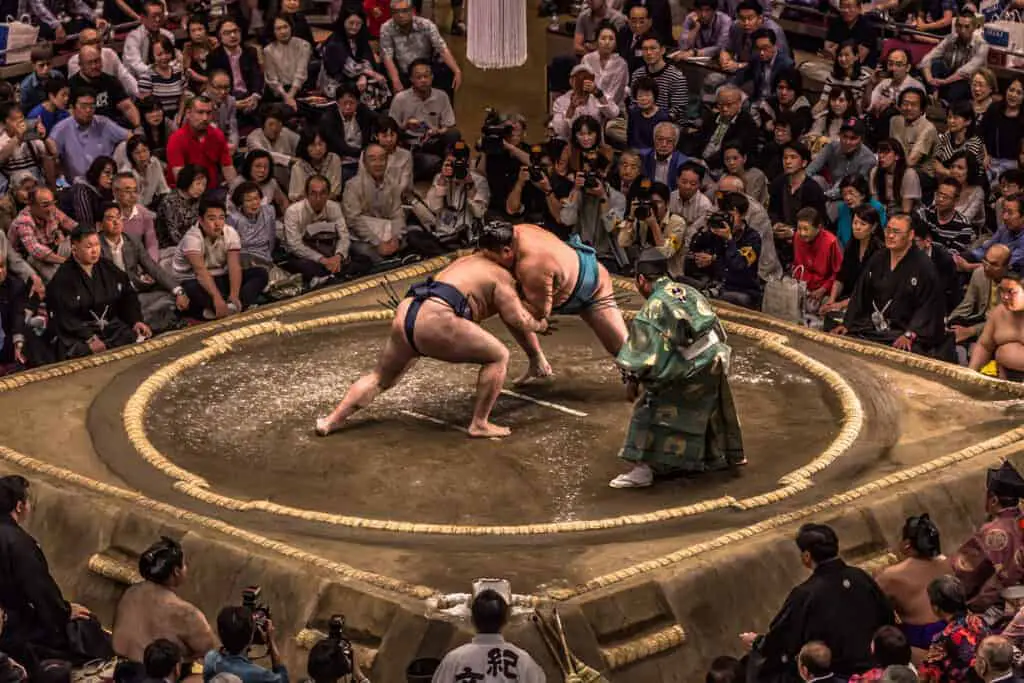
The do’s and don’t of the Sumo lifestyle are dictated by the Japan Sumo Association (JSA) who exert significant control over wrestlers. Not only are Sumo wrestlers not allowed to drive but they can not have mobile phones, must live in communal housing in their Heya (training stable), can not have romantic relationships and are prohibited from wearing western clothing.
As Sumo wrestlers rise through the ranks the rules tend to relax (driving ban still remains) however, no matter how successful a Sumo wrestler becomes their livelihood can immediately be taken away by the JSA who are not shy about issuing lifetime bans.
Asashoryu, a Yokozuna (highest rank in Sumo) and Sumo superstar was forced to retire in 2010 following a January contest when he became intoxicated and assaulted a waiter, fracturing his nose. After meeting with the JSA he decided to retired and make the following statement, “I feel heavy responsibility as a Yokozuna that I have caused trouble to so many people. I am the only person who can put an end to it all. I think it’s my destiny that I retire like this”.
As Sumo wrestlers are forced to live in communal stables to train and compete in Sumo it becomes easy for the stable masters and other wrestlers to police each others behavior. There is little privacy which makes it difficult for Sumo wrestlers to break the rules and as they can’t risk being removed from their stable which would effectively end their career they are forced to follow the rules no matter how strict including not driving.
Does Shinto Prevent Sumo Wrestlers From Driving?
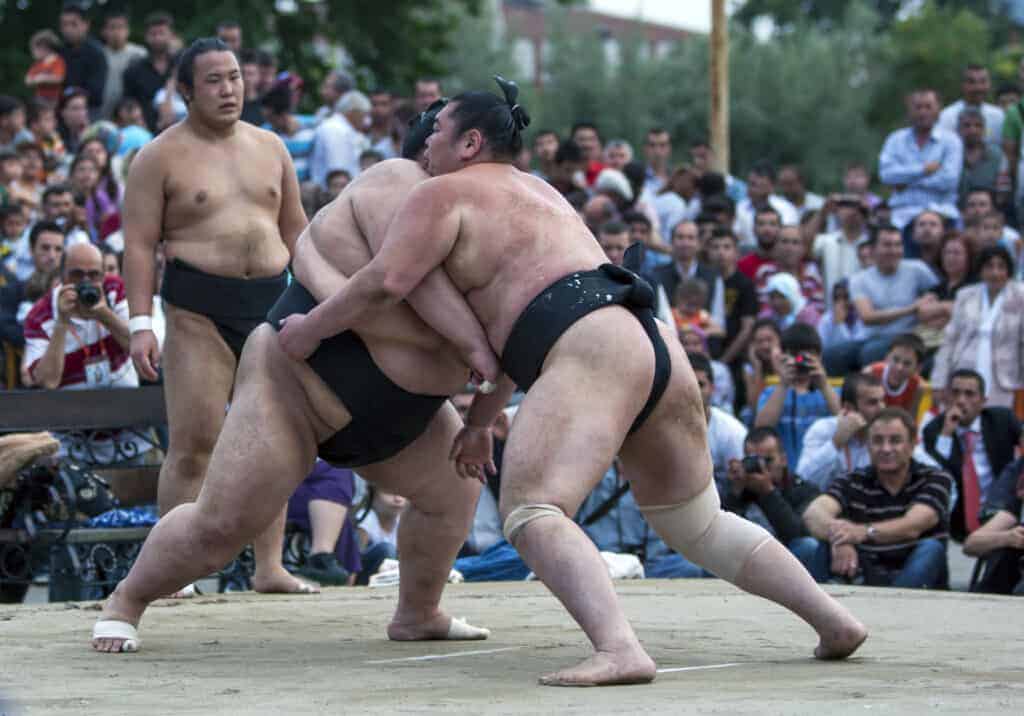
Sumo is intertwined with Japan’s national religion, Shinto. Shinto is a mysterious religion but it is fundamentally about purification. All things in the world contain good and evil spirits and you need to constantly pursue good spirits and to physically clean your body to cleanse yourself from inadvertent contact with evil spirits and pollution.
Sumo was originally performed as part of a Shinto ceremony to bless the harvest and honor the spirits. To this day the Shinto traditions of Sumo remain strong. The ring Sumo wrestlers compete in is designed as a Shinto Shrine. The Sumo referee is dressed in similar clothes to a Shinto priest. When the Sumo wrestlers throw salt on the the ring they are practicing a Shinto purification ceremony.
Sumo wrestlers are expected to pursue actions which contain good spirits and purify themselves of actions containing bad . The JSA in keeping with Sumo’s Shinto traditions have declared certain behaviors and objects, driving a car being one of them. Cars are a foreign western creation as well as jeans, sneakers and mobile phones all of which have been designated by the JSA as being impure and are therefore banned.
Do Sumo Wrestlers Train Hard?
Sumo wrestling is more than a sport it is an all encompassing lifestyle. Sumo wrestlers are expected to dedicate their entire lives to becoming a champion. Sumo wrestlers live a life free of distractions of the modern world so they can dedicate all of their energy and time to training. These potential distractions which are prohibited include driving cars and other modern technology such as phones and computers.
Sumo wrestlers train very hard. Here is an example of a typical training routine of a Sumo wrestler.
Sumo wrestlers rise early in the morning with morning training typically starting at 6am. The wrestlers start by practicing ritual stomping (Shiko). Wrestlers stand with a wide stance in a squat position, place their hands on their thighs or knees and life one foot in the air as the foot remains firmly planted on the ground. As they return their lifted leg to the ground they rise out of the squat position. Shiko is a great exercise to build hip, hamstring and quad strength while also helping wrestlers practice their stance. Wrestlers will perform hundreds of repetitions of Shiko daily.
How To Perform Shiko
The wrestlers then move on to training their pushing strength. Wrestlers perform a movement known as Teppo. To perform Teppo wrestlers push against a wooden pole performing a push up while at the same time swing their leg forward. Wrestlers first make contact with one arm and then swing the opposite leg as the make contact with second leg before pushing themselves away from the pole. Teppo is used to teach wrestlers how to maintain their balance while unbalancing their opponent.
How To Perform Teppo
After Teppo wrestlers work on their flexibility. Wrestlers perform an exercise known as Matawari. During Matawari wrestlers will perform a center split and try to touch their chest to the ground. Wrestlers will often push each others’ backs to enhance the stretch. Sumo wrestlers are surprisingly flexible and its no wonder when they perform this movement regularly.
How To Perform Matawari
After stretching it is time to wrestle live. This portion of the training is known as Moshiai where a wrestler will have mock matches and remain in the ring until he is defeated. Sumo wrestlers also practice Butsukari Geiko where they practice the beginning portion of a Sumo match where wrestlers throw themselves into each other. This is the most strenuous portion of training as it closely resembles competition. Training becomes more intense the closer it is to competition.
Sparring Between Asashoryu And Harumafuji
Training typically lasts for 2-3 hours. After training wrestlers take a bath and then prepare their food which is typically a high energy stew known as Chanko and many bowls of rice. After eating wrestlers will relax and often nap to ensure they are ready for afternoon training will typically is the same as morning practice. Then they will repeat the same process of bathing and eating.
Are Sumo Wrestlers Too Fat To Drive?
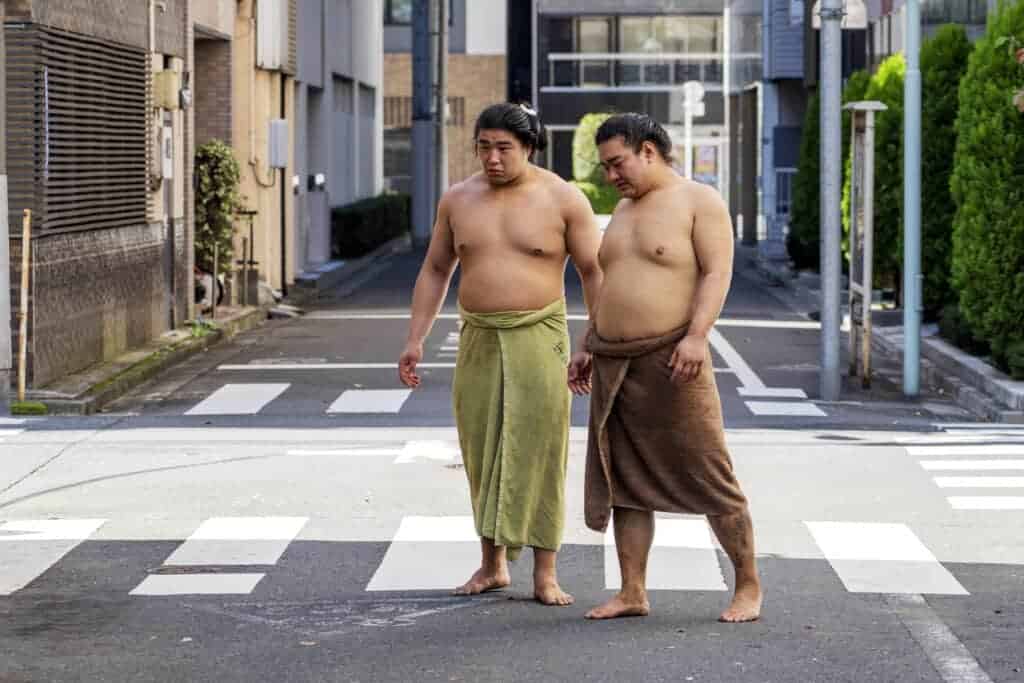
The average Japanese man is 5ft2 tall (160cm) and weighs 140 pounds (63.5kg). The average Sumo wrestler is 6ft tall (183cm) and weighs 330 pounds (150kg). Japanese cars are not designed to accommodate the size of Sumo wrestlers. Not only are Sumo wrestlers enormous men but they have huge stomachs. These stomachs can prevent Sumo wrestlers from getting into a car and using the steering wheel properly. This make it very uncomfortable and dangerous for Sumo wrestlers to step behind the wheel.
Although the banning of Sumo wrestlers from driving is not likely to be caused by the potential issues their size may have on the wrestlers operating a motor vehicle it may be used as an argument by the JSA to keep the ban in place.
How Do Sumo Wrestlers Travel If They Can’t Drive?
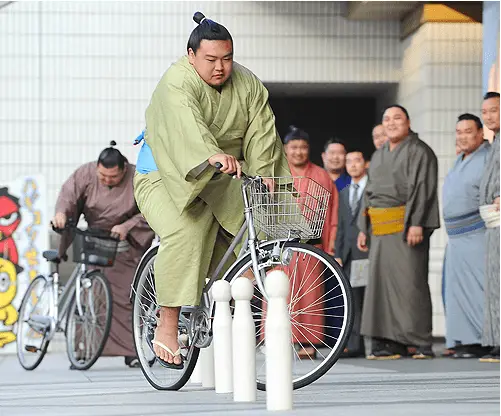
As Sumo wrestlers can’t drive they have to use other modes of transports. Lower tier Sumo wrestlers will typically catch buses and the metro. It is also not uncommon for Sumo wrestlers to ride bicycles. Highly ranked Sumo wrestlers will often have personal drivers or be driven around by their wives. Sumo wrestlers typically don’t travel far from their stables as their day is filled with training leaving little free time.
What Is The Punishment If A Sumo Wrestler Is Caught Driving?
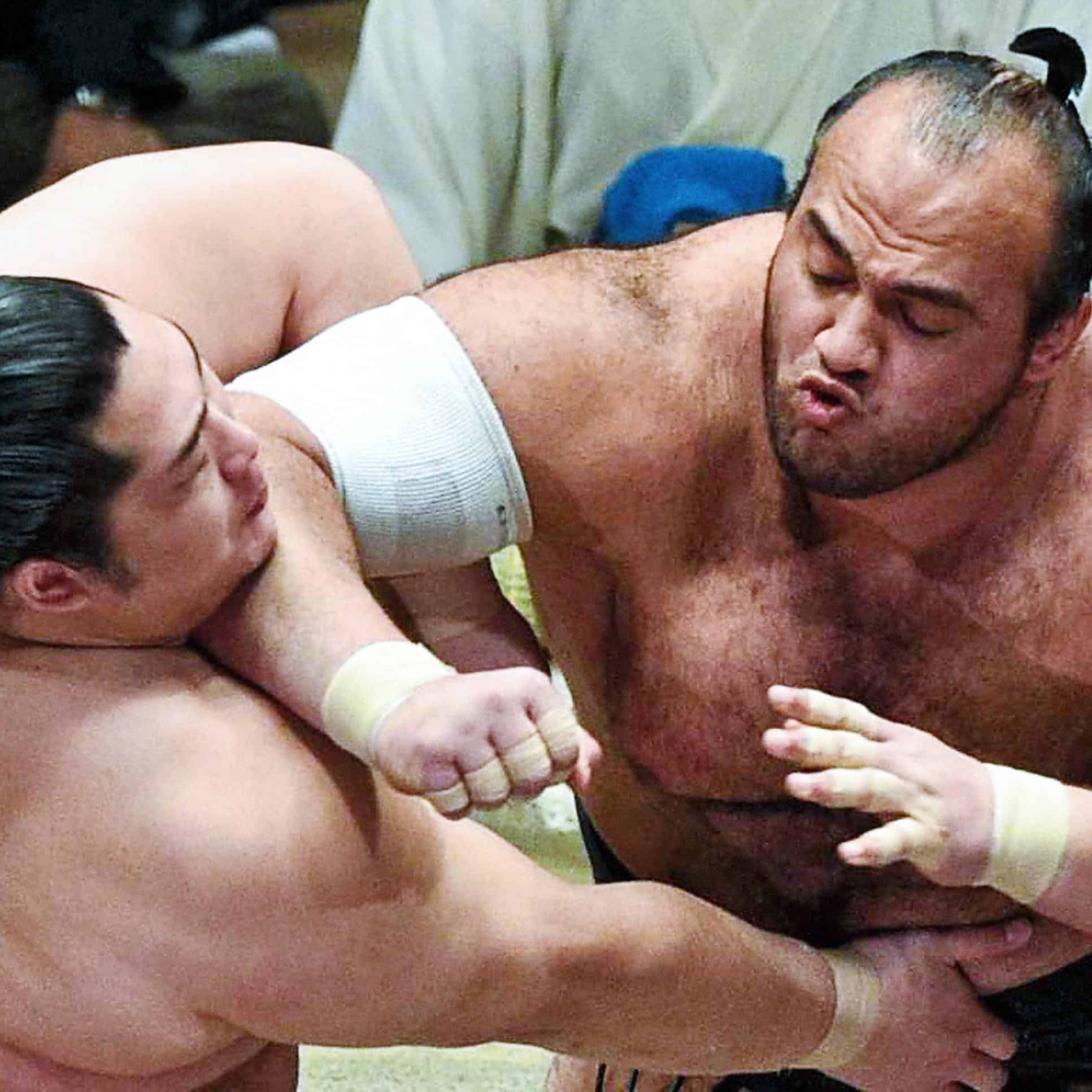
If a Sumo wrestler is caught driving they can be suspended or banned from the sport. If they are caught driving the Sumo’s circumstances and their reputation will dictate the punishment.
There have been a number of infamous incidents where Sumo wrestlers have been caught driving and received life time bans. In 2018, Osunaarashi a wrestler hailing from Giza, Egypt was involved in a car accident. Osunaarashi attempted to blame his wife for the accident, claiming she was driving. Unfortunately for Osunaarashi he was caught on CCTV driving the car and was swiftly thrown into retirement by the JSA.
Osunaarashi wasn’t the first nor will he be the last Sumo to get in the driver’s seat. In 2007, Mongolian Sumo wrestler Kyokutenho was handed a lifetime ban for crashing a car. The most infamous Sumo ban resulting from driving a car occurred in 2000 when Japanese wrestler Toki Susumu hit and killed a female pedestrian causing uproar bringing shame on the sport.
Conclusion
Sumo is intimately linked with the Shinto religion. Sumo wrestlers are expected to live a pure life and dedicate themselves wholly to Sumo. Activities such as driving are considered modern and impure and thus should be avoided. Driving also serves as a distraction which is viewed as having a negative impact on a Sumo’s performance. It is unlikely the ban on Sumo wrestlers driving is going to be lifted anytime soon as there have been infamous incidents of wrestlers disobeying the ban and being involved in crashes such as in 2000 when Toki killed a female pedestrian. So far the JSA has not hesitated in banning wrestlers who attempt to drive.
